Thinking of a different way to glue your life together? A Brompton Electric is small enough to slide under a desk, fast enough to take on a weekend ride, and flatten hills without breaking a sweat. Built on Brompton’s iconic fold and powered by F1-level engineering, the Brompton Electric bike moves through cities and escapes them just as easily. Three blocks or thirty kilometres – it’s compact, capable, and seriously fun.
Unfold The City
Here in North America there is an almost unconscious misconception that bicycles are made for recreation. A visit to most bike stores reinforces this somewhat narrow vision. That’s because in the city, bikes aren’t used to climb mountains or chase personal bests – they’re used to go places. Simple as that.
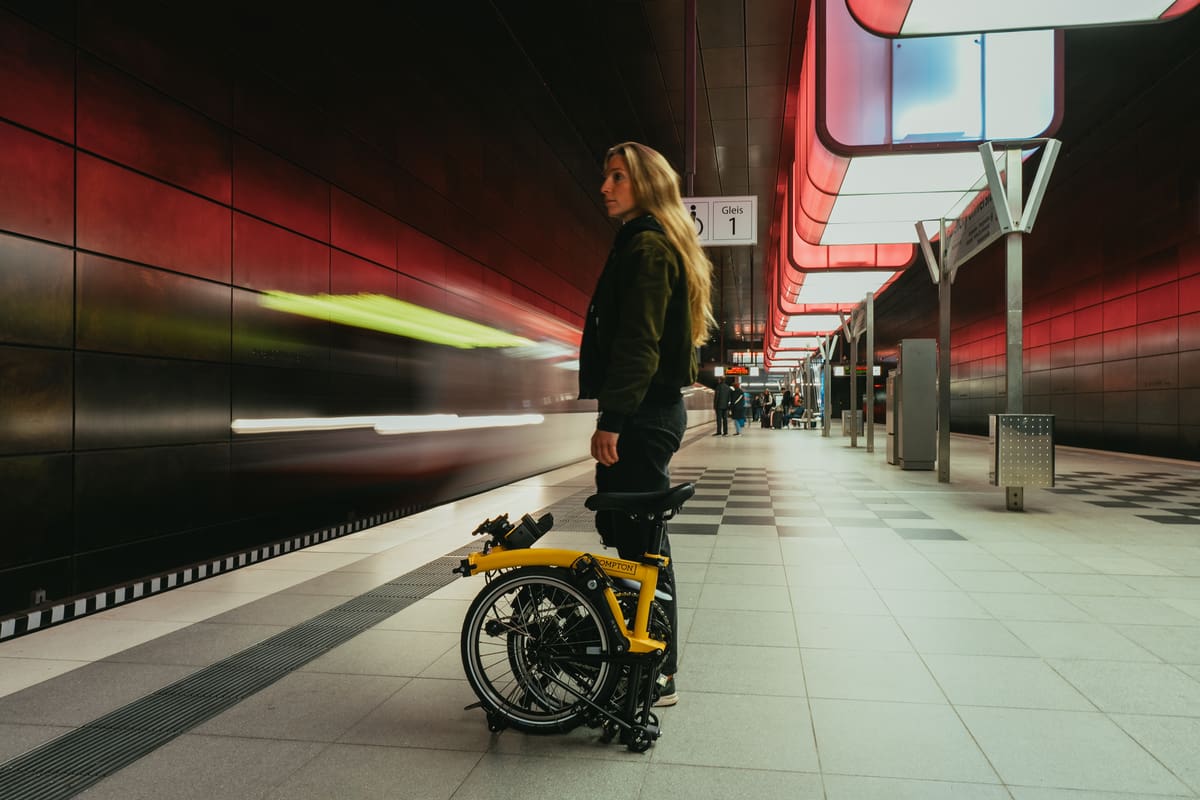
In dense urban centres like Toronto, New York, or Amsterdam, life clusters close together. Work, home, cafes, groceries, daycare are all within a few kilometres of each other. These distances are too long to walk and too short to justify the hassle (or cost) of a car. That’s where the bike becomes your velcro: faster than walking, more flexible than transit, and way less anxiety-producing than driving. And, if it comes indoors – even better. A folding bike is the ultimate city bike.
Fold Up The Indoors
Very few bike brands can claim to origin story to city cycling. But, this is the context in which the Brompton was born. Not for touring the Alps or escaping civilization – although it can do that too – but for linking the nodes of everyday city life. They were built for return. That is – leaving your front door, hopping on a train, zipping to the office, parking the bike under your desk, and reversing the journey at the end of the day.

But now, add an electric assist. Suddenly, hills are flattened, your range expands, and you arrive to work (or your hot date) looking as fresh as if you had stepped out of an Uber.
Why Small Wheels Work Better
A lot of people instinctively believe that bigger wheels are better. Once again, this is the recreational bias. Big wheels are indeed faster where distances are longer, straighter, and with fewer interruptions.
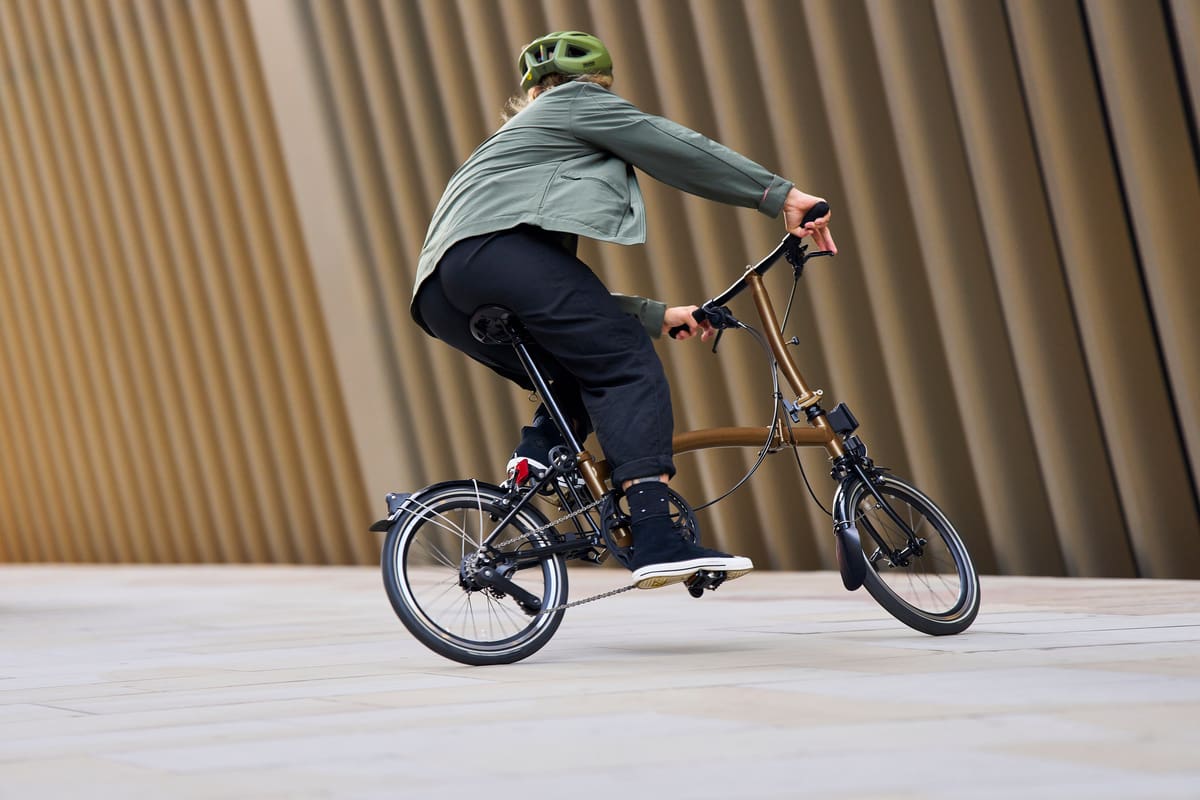
But in the city, big wheels are inefficient. Urban riding is a game of constant stops and starts, quick turns, tight squeezes, and fast accelerations. Small wheels are your gridlock weapon!
Electric Assist For The Real World
Many people buying electric bikes for the city tend to unconsciously buy around range anxiety. While most modern e-bikes tend to cover a remarkable amount of range (an Electric Brompton covers up to 7okm), most city cyclists don’t critically assess just how little ground they cover in an average trip. If anything, most folding bike provide far too much range. That’s also why they are so heavy. Range anxiety isn’t a thing. But, weight range is.
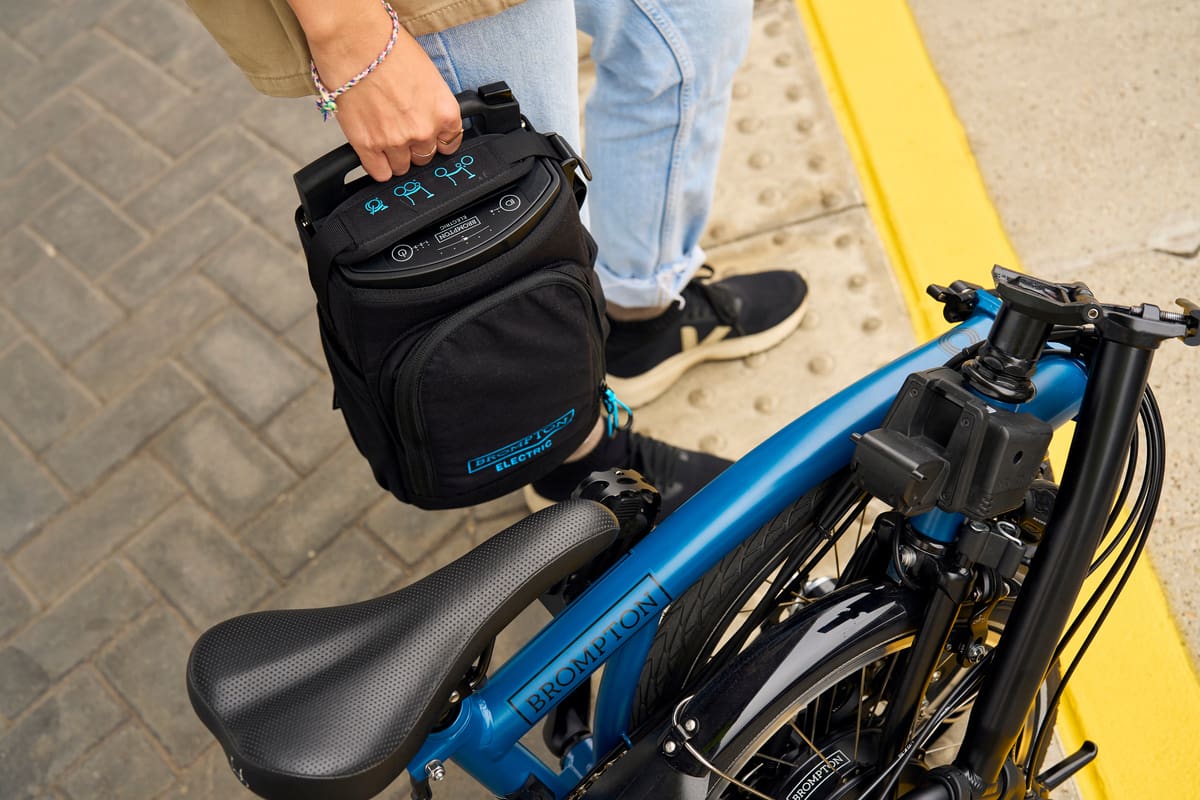
Studies from the Netherlands show that urban cyclists rarely exceed 7.5km in a single trip. That’s a small range. No matter where you live – Holland or Toronto – if your property has a high walk score then you live in the so-called “last mile.” Living in the last mile means that your quality of life is judged by its close proximity to home. The problem is, all distances in the last mile are all too short to drive and too far to walk. That’s where a bicycle does its work. And, if it’s an electric Brompton you have the ultimate solution.
Cheating Traffic
In the city, the primary task of an electric bicycle is to glue your life together without friction and without sweat. This is quite different from a recreational cyclist. If the definition of a city cyclist is one who lives most of their lives within a 7.5km range, the definition of a recreational rider is one who rides over that 7.5km range.
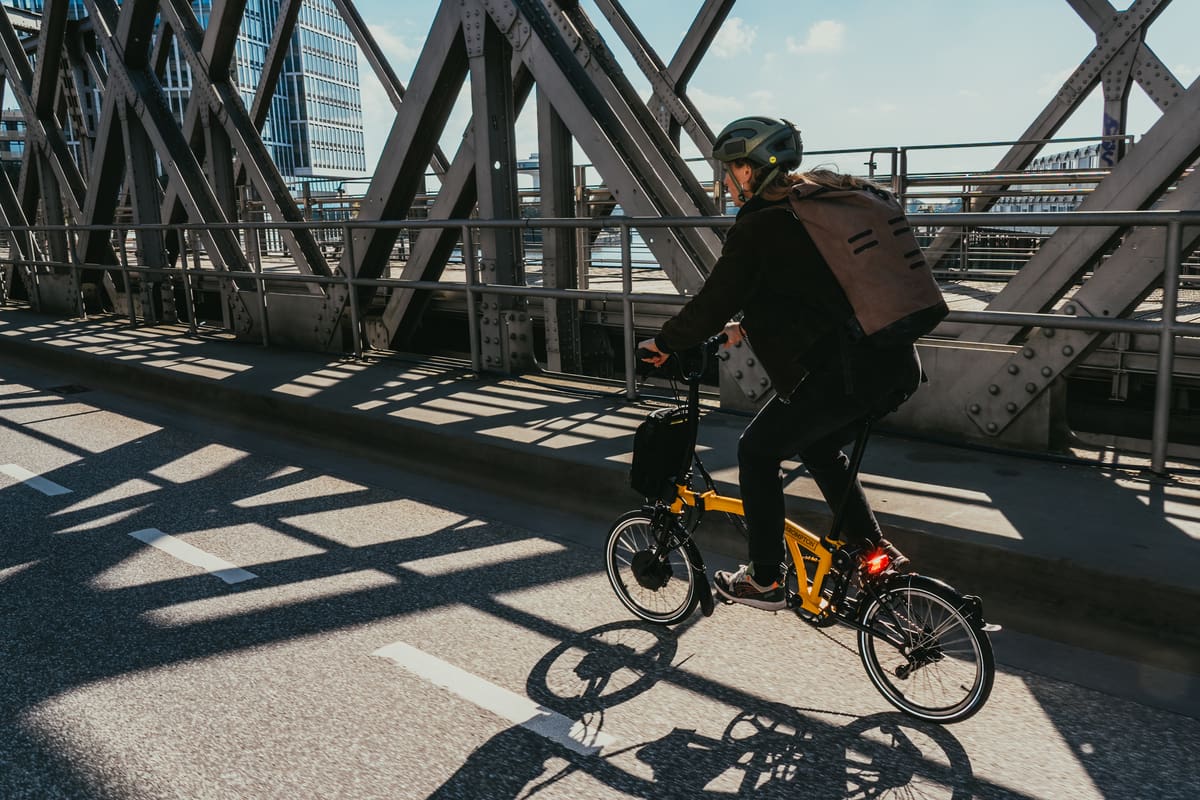
And, why does a recreational cyclist do this? Because they want to get their sweat on. They want to doll up in lycra and finish with a hot shower. To many recreational riders, an electric bike is cheating. But to the city cyclist, a bike isn’t primarily for recreation, it’s transportation. And, as transportation, it competes with cars for on-time efficiency, cost, and the ability to arrive looking your sartorial best. Think of the electric assist as your chauffeur and the bike lane as your red carpet.
Power Assist
Thus, efficiency through gridlock is the number one reason people choose a bicycle in the city, physical fitness is a secondary bonus. If your distances are short but you have hills to reckon with, a Brompton Electric bike will flatten them. Longer distances? A Brompton will shrink them. But, most of all, a Brompton links work to window-shopping to cafe meetings and gallery visits all sweat-free and without a change of clothes.
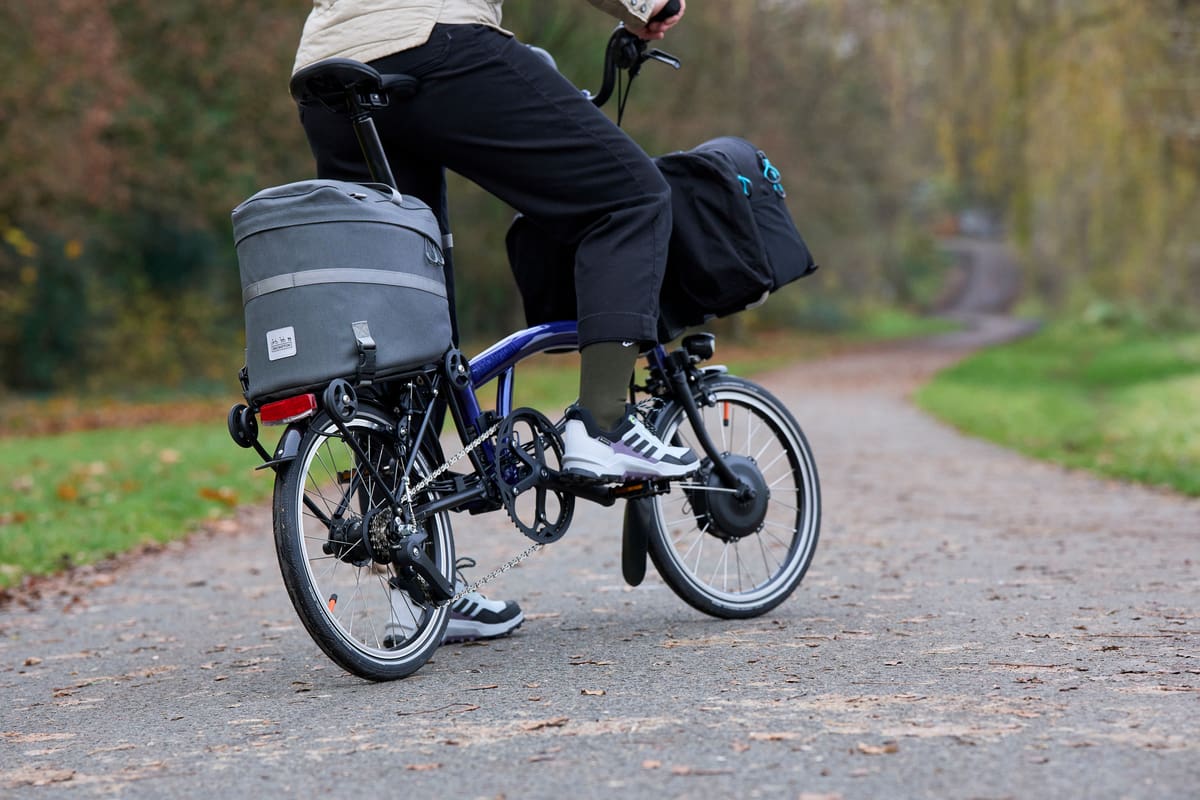
And, if you want to do longer rides on the weekend, it’s still not cheating. A true electric assist doesn’t take over pedalling, it assists pedalling. That means you can enjoy the pleasure of two-wheeled exploration without the dirt-and-sweat masochism that so many recreational cyclists seem to think is essential. Instead, explore your city! Hop on a rail trail! And put enjoy some cocktails or a coffee in between! That’s what a bike ride is all about. Pleasure!
Gearing: The Real Choice Between Models
Brompton offers two main lines of electric bikes: the C-Line and the P-Line. It’s tempting to think that each line of bike offers a different use case, but if we can offer any insight here, this is not a helpful way to break things down. The real choice is about gearing. The Brompton Electric comes in 4-speed and 12-speed versions, and the number of gears speaks to the use-case. The best way to understand the difference between the C-Line and P-Line is that they embellish these use cases. Let’s dig in.
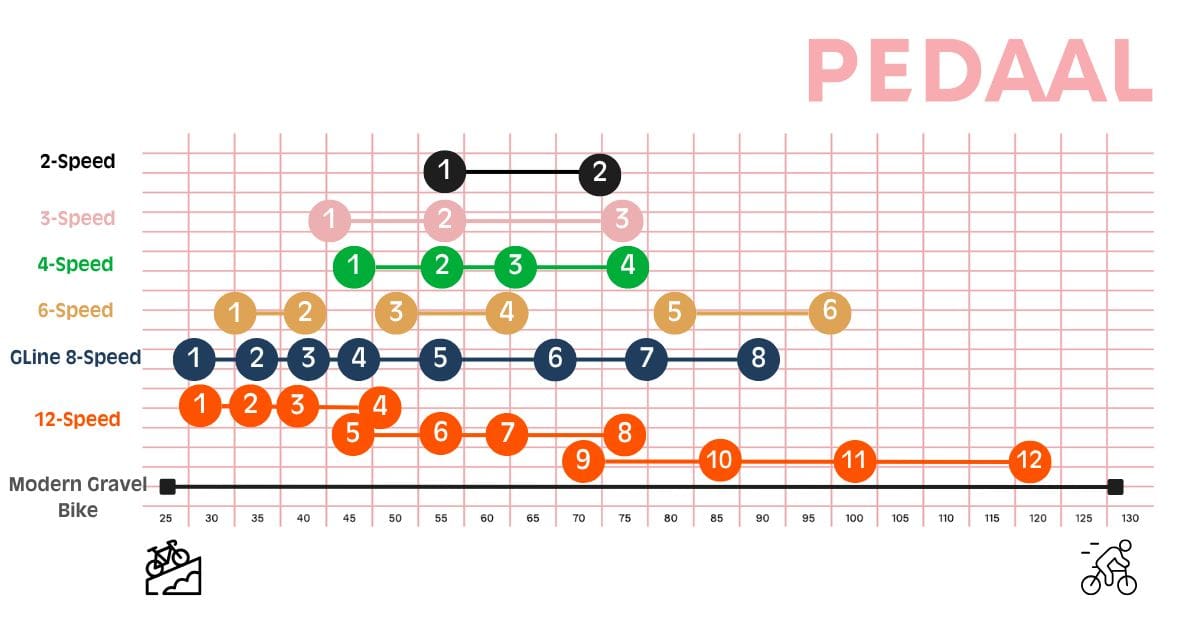
Without getting too much into detail, the chart above demonstrates what the gearing looks like between a 4-speed and 12-speed. The 12-speed has the same gearing as a modern gravel bike – and it doesn’t get bigger than that these days! The 4-speed is all about keeping weight low and giving you all the gears you need in conjunction with the power assist. Let’s break this down a little more.
The Four Speed
You might say that the four-speed Brompton electric is in-essence a city bike. It is meant to handle the 7.5km range that constitutes any downtowners life. If your trips are short and frequent, you don’t need the extra weight or complexity of more gears. But, what if you have hills? Well, in all honestly, the Brompton four-speed does not have enough gear range to handle big hills without the power assist. But, that’s why you have the electric assist. Crank up the assist level and you can flatten hills with ease.
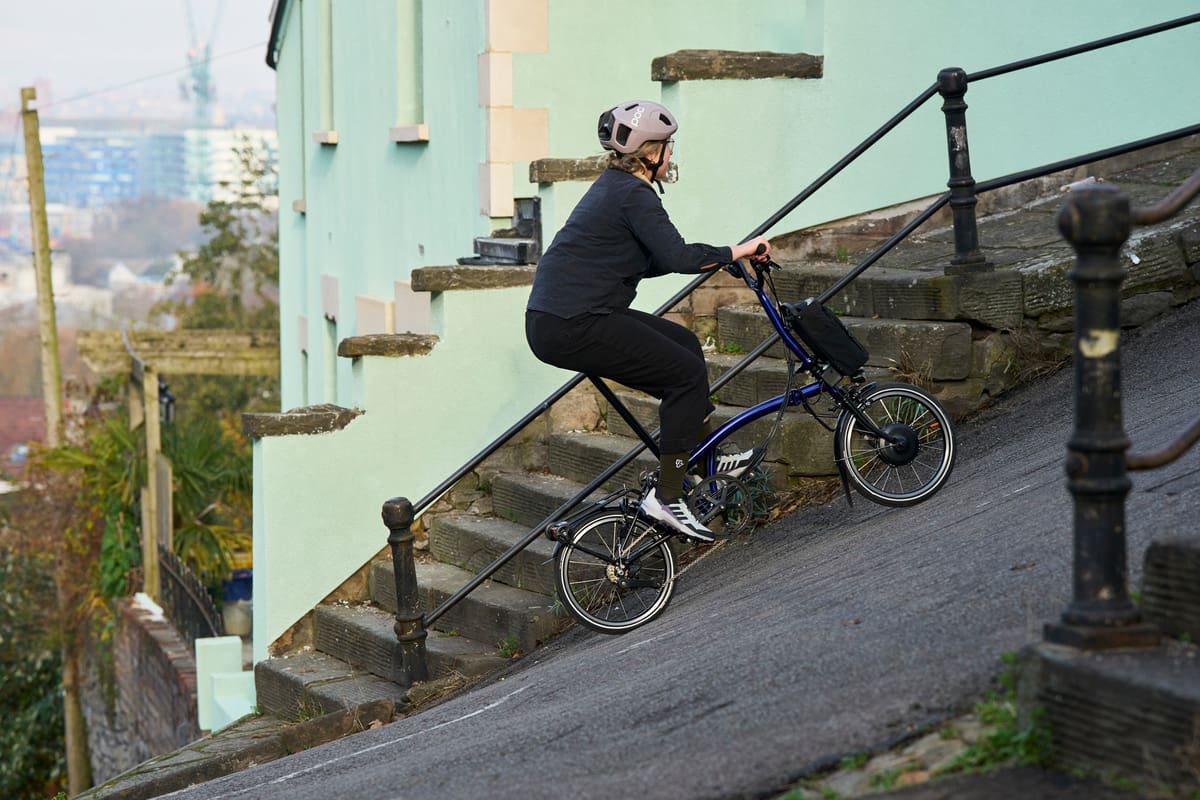
Of course, this drains the battery more. But again, given that the most a city cyclist will travel in a single trip is 7.5km – and that the range on a Brompton Electric is close to 7okm – you will always have enough range to get you there. So, why wouldn’t you choose the 12-speed if you were a city cyclist? Because it adds another 2.25lb of weight. That makes a difference if you lift the bike a lot, whether that’s stairs, onto commuter trains, or into the trunk of your car.
The Twelve Speed
So, who buys the 12-speed? It’s for the person who wants weekend adventures, whether that’s on top of city cycling, or for the sake of adventure itself. The Electric Brompton, after all, is the perfect bike if you have a boat, live the van-life, or travel by train, plane or car to explore new cities or find new trailheads.
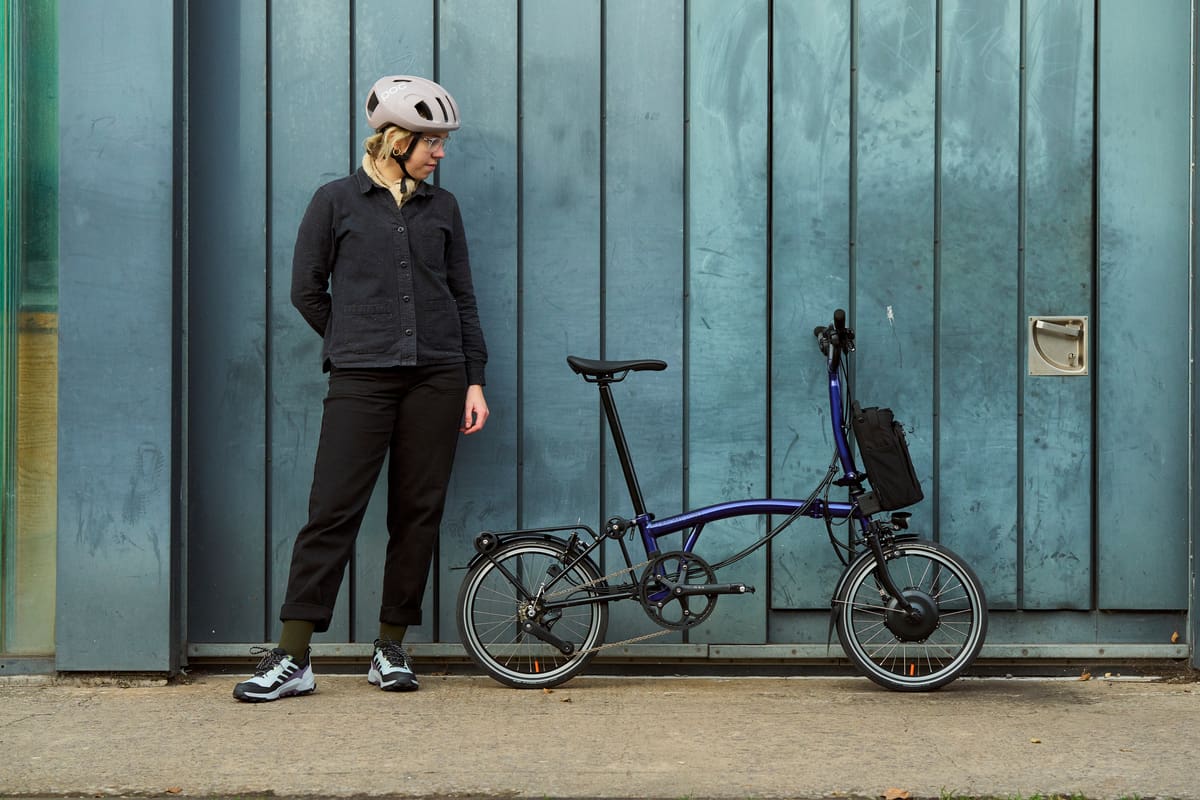
So, if you plan to take longer rides, encounter more varied terrain, or just want the option to ride without assist, then the 12 speed make sense. More gears means more flexibility, especially when you’re trying to preserve battery range over greater distance. If that’s you, then the 12-speed may be heavier, but it’s value-added weight.
But, what if you are a city cyclist who needs a lighter option or a recreational cyclist who still needs to carry the bike up flights of stairs in the city? This is where we discuss the difference between C-Line and P-Line.
P-Line vs C-Line: It’s About Weight, Not Use Case
So where does frame type come in? Think of it as a matter of weight and portability. The C-Line uses a full steel frame, making it more affordable but also heavier. The P-Line incorporates titanium components, shaving off another 2.1lb. Once you add in the gearing differences, the P-Line 4-speed at 34.4lb is 4lb lighter than the C-Line 12-speed at 38.14lb. If you’re walking the bike up long flights of stairs, that makes a big difference.
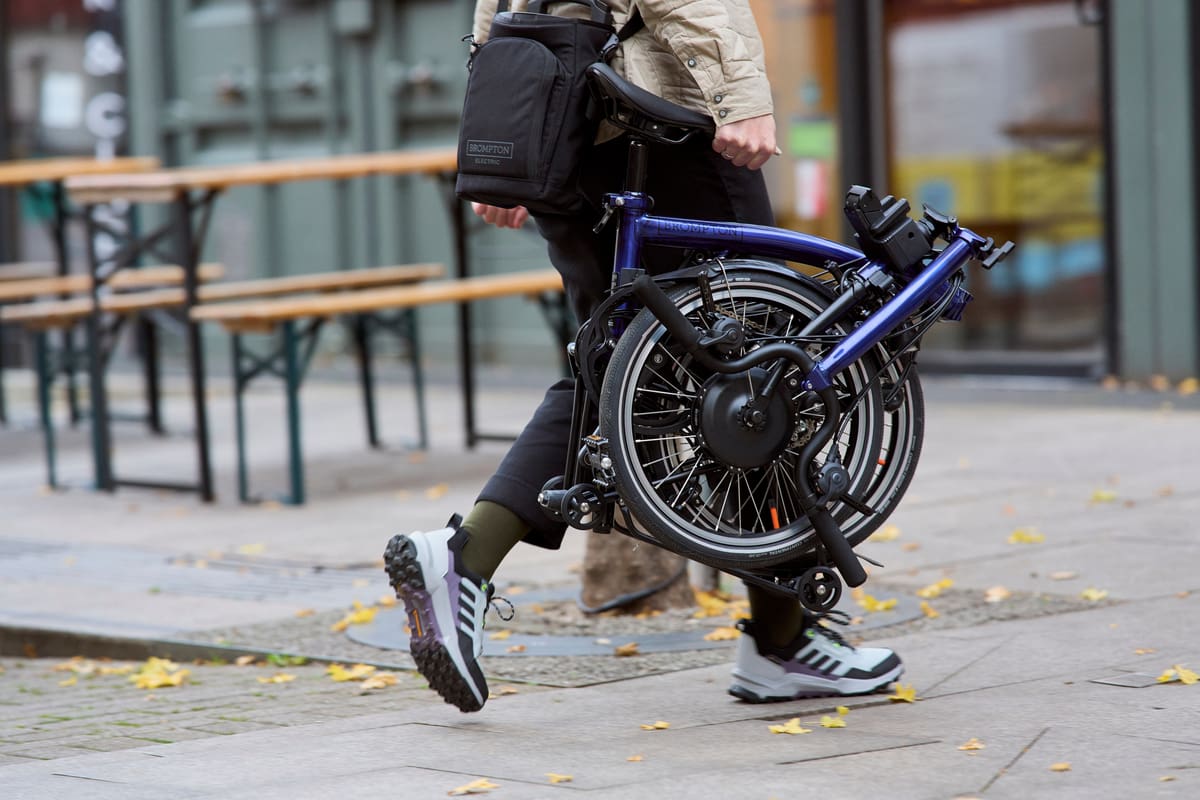
But, added weight doesn’t change how the bike rides. That’s why we steer customers to choose based on gearing first, then weight, then budget. Gearing defines the use-case, lighter weight assists the use-case, and hey, budget is always budget.
Which Model is Right for You?
So, how does this all unpack according to use-case? Let’s dive in:
- Electric C-Line 4-Speed: A modestly priced, true city bike. Tough, simple, and effective at 36.5lb.
- Electric P-Line 4-Speed: At just 32.4lb, this bike is light, easy to carry, and ideal for urban riders with lots of stairs or transit in their routine.
- Electric C-Line 12-Speed: Built for value and versatility. Getting heavier at 38.14lb, but less a city bike and perfect for the adventurer and explorer who doesn’t need to carry the bike nearly as much as a city cyclist would.
- Electric P-Line 12-Speed: At 36.5lb this bike is just as light as the C-Line 4-speed but has far more capacity for recreational adventure. It’s the perfect city bike and weekend explorer all bundled into one.
Beyond The Fold: What Sets A Brompton Apart
How does a Brompton Electric compare? Let’s compare it to the Tern Vectron, Brompton’s biggest competitor. Both promise a compact, folding e-bike for urban riders – but in practice, they’re radically different. One key distinction lies in the wheelbase. A bike’s wheelbase determines its stability and unfolded footprint, and Brompton has mastered this engineering puzzle. Despite folding down to just 3.1 cubic feet—far smaller than the Tern’s 8 cubic feet – a Brompton unfolds into a longer, more stable ride than many full-sized bikes. It’s a rare case of having it both ways: ultra-compact when folded, highly stable when ridden.

Weight is the other major differentiator. The Brompton Electric starts at just 32 lb, while the Tern Vectron weighs in at a hefty 51 lb. That bulk undermines the very point of a folding bike. The reason? Tern, like many brands, uses off-the-shelf Bosch or Shimano motors—robust systems designed more for cargo bikes than compact commuters. Brompton takes a different approach, engineering their own system tailored specifically for folding, portability, and everyday urban use.
Engineering From the Ground Up
Brompton is an engineering company first and a bike company second. They design over 1,200 proprietary parts, including their own folding mechanisms and drivetrain systems. When it came time to build an electric model, they didn’t bolt on an off-the-shelf motor. That’s because most motors without the Bosch or Shimano brand are unserviceable, low quality and dangerous.
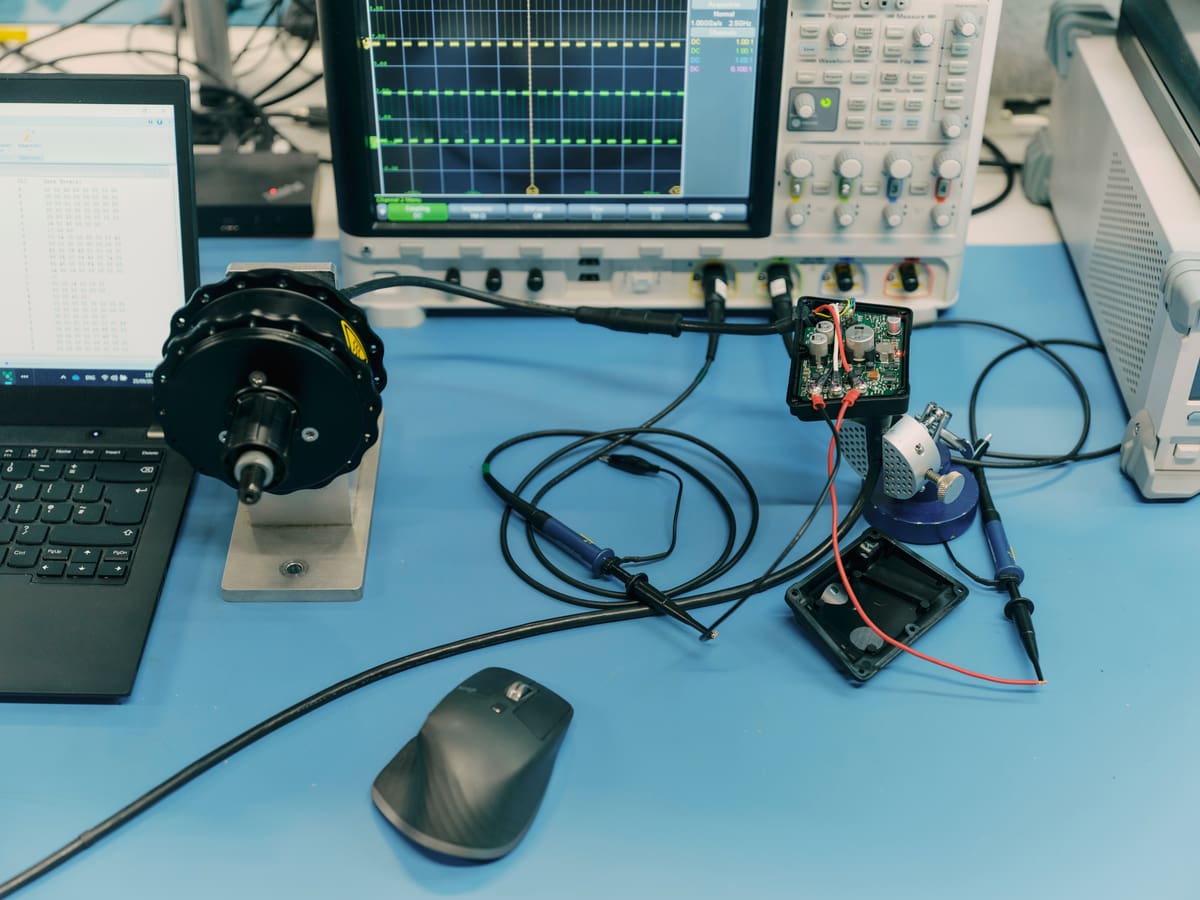
Instead, Brompton partnered with Williams Advanced Engineering to create a lightweight, high quality system built for a folding bike and backed by the best engineers in the world. Not everyone has an F1 engineering team in their back pocket. The result is an intuitive motor that is powerful, efficient, and safe.
In Conclusion
The Brompton Electric is a compact, capable bike built for modern life. It folds in seconds, rides with confidence, and adds just enough power to flatten hills and extend range without taking over the ride. Whether the goal is a faster commute, an easier climb, or a more flexible weekend adventure, it delivers all the benefits of an e-bike without the bulk. Light to carry, quick to store, and easy to love – it’s the right tool for getting more out of the city, and more out of your ride.
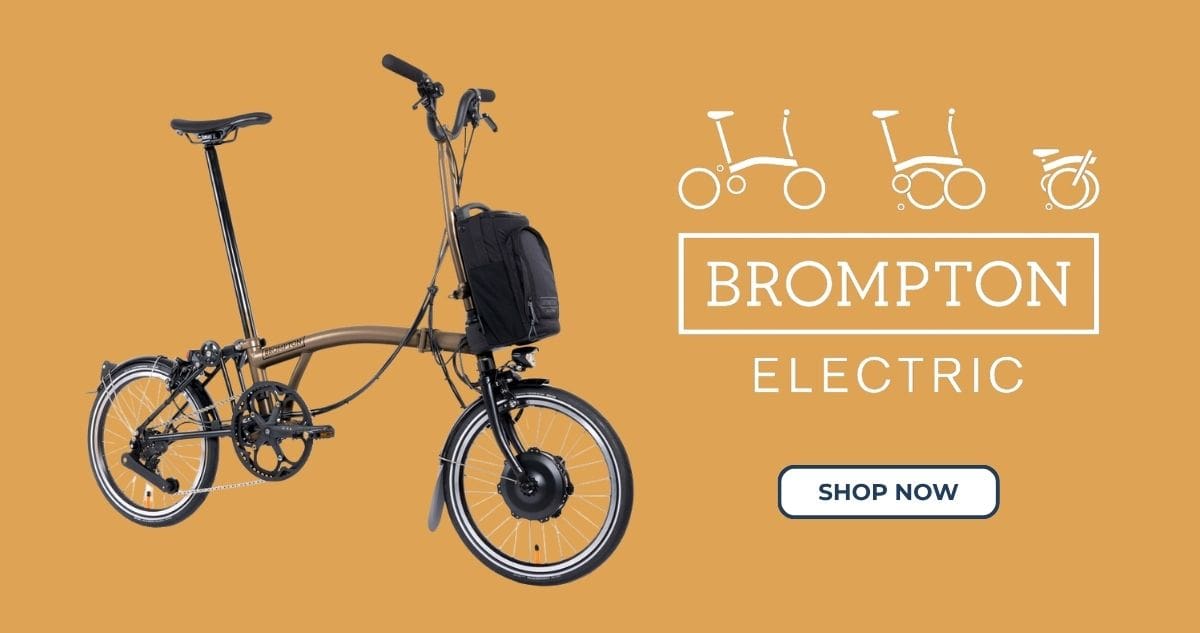 Interested? Book an in-store or remote sales appointment. Or, just fill in the form with your question below!
Interested? Book an in-store or remote sales appointment. Or, just fill in the form with your question below!




